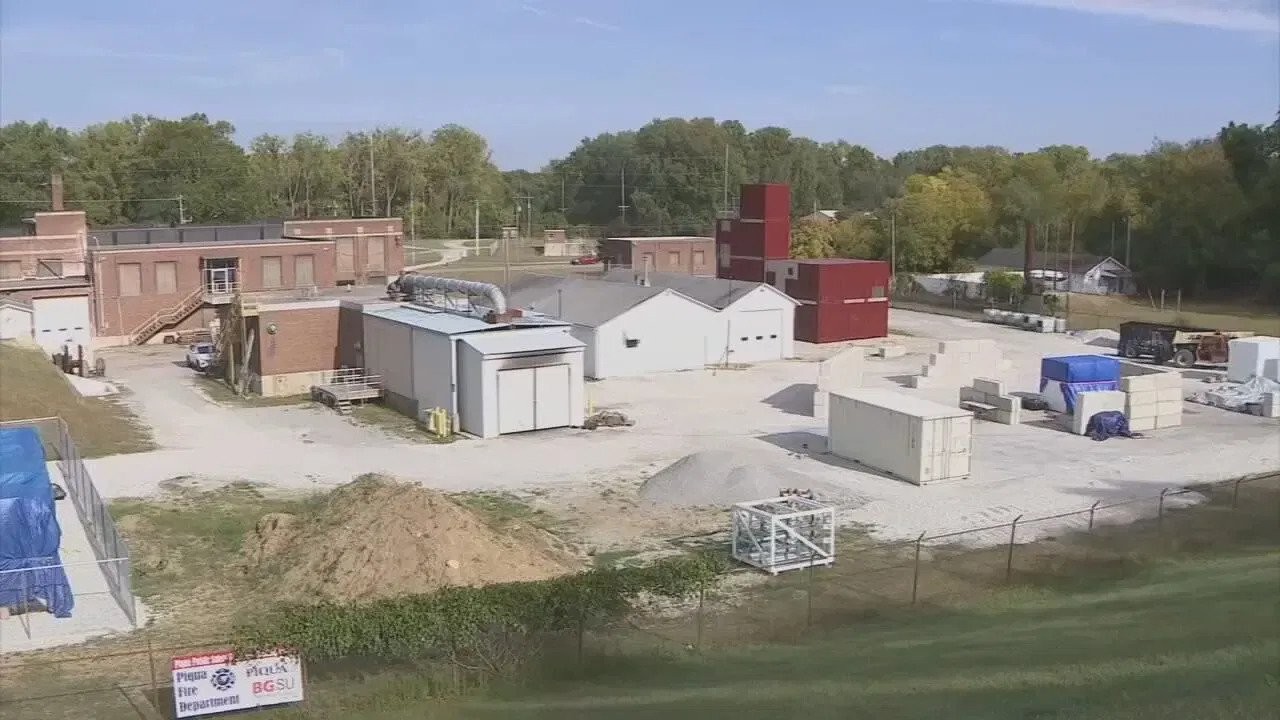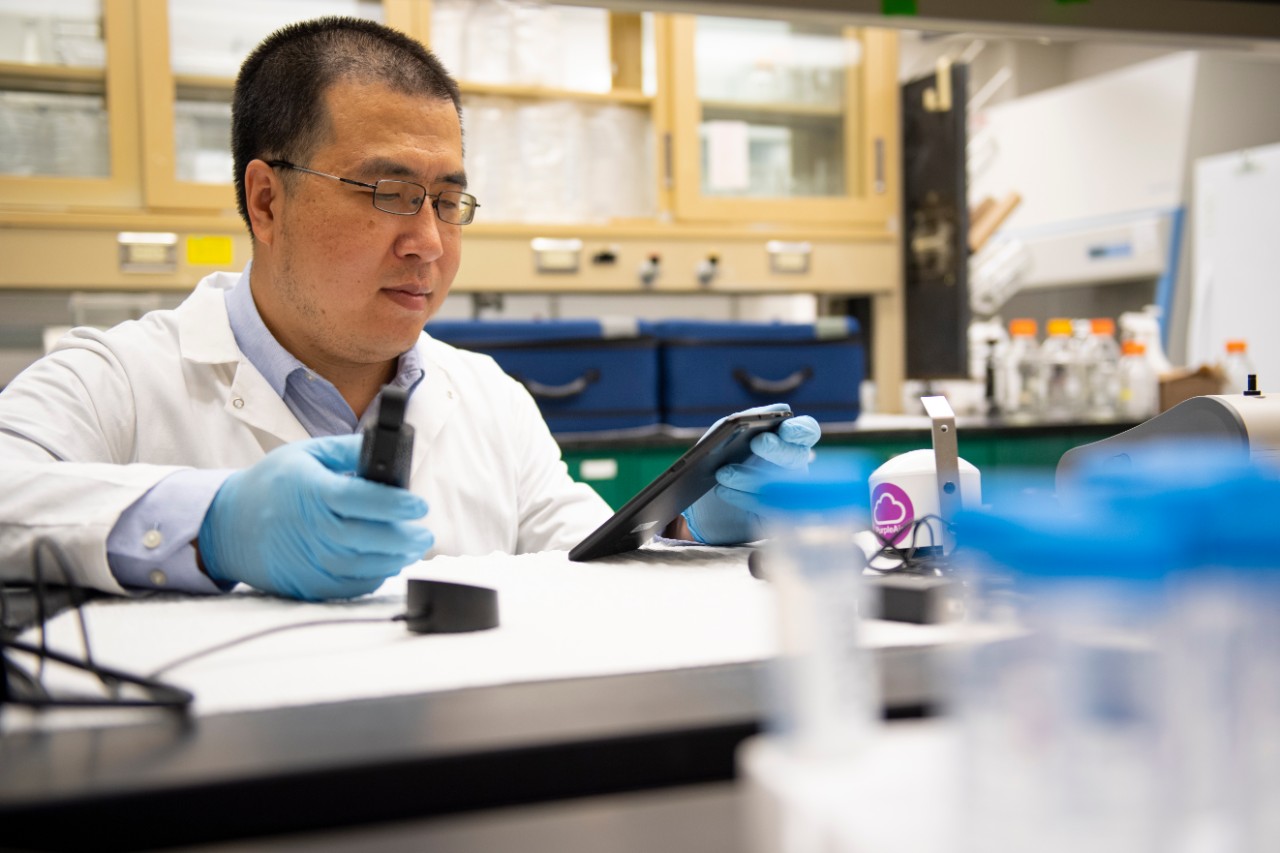
Dayton 24/7 Now: Environmental concerns after lithium-ion battery burns in Piqua, why the company was allowed to police itself
UC expert explains the environmental and health impact
People in the Dayton, Ohio suburb of Piqua are expressing concerns about the city burning lithium-ion batteries at a training facility near the Great Miami River.
The program had been going on for five years, since 2018, but the environmental impact of these lithium-ion battery burns is still unknown. After protests and demands for answers from city officials, the City of Piqua stopped its battery burn program on September 21, 2023. This after a site inspection from the Ohio EPA and RAPCA found two violations.
Dayton 24/7 Now produced a story on the issue, interviewing Jun Wang, PhD, of the Department of Environmental and Public Health Sciences at the UC College of Medicine.

Jun Wang, PhD, of the Department of Environmental and Public Health Sciences in the UC College of Medicine
“So lithium-ion batteries are actually quite dangerous, not even with just burning, the dangers come from chemicals in those batteries,” Wang said.
Wang said that the biggest concern of burning lithium-ion batteries is the air quality. He says chemicals inside those batteries include things like fluoride, hydrogen cyanide, and hydrogen fluoric acid.
“Of course, that's the normal phase, while it's actually burning, you add to the normal combustion products without burning anything, for example carbon monoxide, carbon dioxide, nitrogen oxides and other particulate conditions,” said Wang.
He was asked by Dayton 24/7 Now of the chemicals he mentioned, how could that affect someone breathing them in.
“Most of those toxic chemicals exist in a gas phase, which means they disperse fairly quickly. That's both good and bad," Wang said. "The good thing is when they disperse, they get diluted by the air. The bad thing is they disperse very quickly so it depends how far away you live from this facility, or how far away you work from this facility. It also depends on wind direction, if you are downwind to the release of those pollutants, that will have a lot of issues for your respiratory system, so people with asthma or COPD are particularly vulnerable to those gasses because they are very corrosive and some are very toxic even at a trace level, so even if you inhale a little bit you might have a longer problem.”
Lead photo of Piqua fire training facility/Dayton 24/7 Now
Next Lives Here
The University of Cincinnati is classified as a Research 1 institution by the Carnegie Commission and is ranked in the National Science Foundation's Top-35 public research universities. UC's graduate students and faculty investigate problems and innovate solutions with real-world impact. Next Lives Here.
Related Stories
U.S. News & World Report: Metformin may help young patients with bipolar disorder avoid weight gain
October 31, 2023
U.S. News & World Report highlighted recent research led by the University of Cincinnati and Northwell Health that found the drug metformin can help prevent or reduce weight gain in youth taking medication to treat bipolar disorder.
MSN: Mother's stress levels during pregnancy could increase risk of illness in children
January 13, 2021
A University of Cincinnati researcher says there is a connection between trauma and lifetime stress in an expectant mother and DNA mutation in her newborn child. It could lead to a host of diseases that begin in childhood including obesity, asthma, attention deficit hyperactivity disorder and autism.
Business Courier: UC part of nearly $2M CDC grant to develop next generation of health care PPE
November 10, 2021
UC researchers are taking part in a new nearly $2 million, multiyear study that will help develop a new generation of PPE, or personal protective equipment, for health care workers. UC researchers will work with teams from Iowa State University and the University of California-Davis to improve the design, function and safety of PPE, or personal protective equipment, the university said in a release this week. The study is part of a multi-institutional, four-year grant worth $1.8 million from the Centers for Disease Control and Prevention. The Cincinnati Business Courier published a story on the research.
PBS NewsHour: Why tracking these pollution indicators is key after the East Palestine train derailment
April 19, 2023
Two months after the derailment of a train carrying hazardous chemicals, state and federal agencies are monitoring air, water and soil samples in and around East Palestine, Ohio, for signs of pollution. So how long will those steps be necessary to ensure the safety of the community? Glenn Talaska, PhD, professor emeritus in the Department of Environmental and Public Health Sciences in the UC College of Medicine was one of the experts interviewed for a story produced by PBS News Hour.
Dayton 24/7 Now: Environmental concerns after lithium-ion battery burns in Piqua, why the company was allowed to police itself
November 15, 2023
People in the Dayton, Ohio suburb of Piqua are expressing concerns about the city burning lithium-ion batteries at a training facility near the Great Miami River. The program had been going on for five years, since 2018, but the environmental impact of these lithium-ion battery burns is still unknown. Dayton 24/7 Now produced a story on the issue, interviewing Jun Wang, PhD, of the Department of Environmental and Public Health Sciences at the UC College of Medicine.
Cincinnati.com: Forever chemicals in Ohio's drinking water: Why Cincinnati is better off than Indian Hill
November 22, 2023
New data from the U.S. Environmental Protection Agency shows that industrial pollutants, known as forever chemicals, which are linked to cancer and other serious ailments, are rarely detected in samples of drinking water from Cincinnati and most nearby communities. Cincinnati.com posted a story on PFAS, and one of the experts cited was Susan Pinney, PhD, of the Department of Environmental and Public Health Sciences at the UC College of Medicine.
U.S. News & World Report: PFAS chemicals tied to later puberty in girls
October 3, 2023
Research out of the University of Cincinnati shows that exposure to PFAs chemicals delays the onset of puberty in girls by an average of five to six months. The research was published in the journal PLOS One. U.S. News & World Report published a story on the study, featuring comments from lead researcher Susan Pinney, MD, of the Department of Environmental and Public Health Sciences.
AP: Communities await first US limits on ‘forever chemicals’
March 2, 2023
The Associated Press interviewed Susan Pinney, PhD, of the University of Cincinnati Department of Environmental Health and Public Sciences about the expectation that the EPA to propose restrictions on harmful “forever chemicals” in drinking water after finding they are dangerous in amounts so small as to be undetectable.
New York Times: What to know about lead exposure in children
February 27, 2024
A recent outbreak of lead poisoning from cinnamon in applesauce has drawn attention to the toxic effect the heavy metal can have on children. The cinnamon in the applesauce was believed to have been intentionally contaminated, possibly to add to its value as a commodity sold by weight. The New York Times published an article on the outbreak, quoting Kim Dietrich, PhD, of the Department of Environmental and Public Health Sciences at the UC College of Medicine.
WVXU: Food allergy sufferers want clearer food labels and new research may help
April 19, 2021
Lynne Haber, PhD, a senior toxicologist in the UC College of Medicine, spoke with a journalist from Cincinnati’s public radio station, WVXU, about her research that has identified a possible ‘eliciting dose’ of peanut that may trigger an allergic reaction in individuals with peanut allergies.
